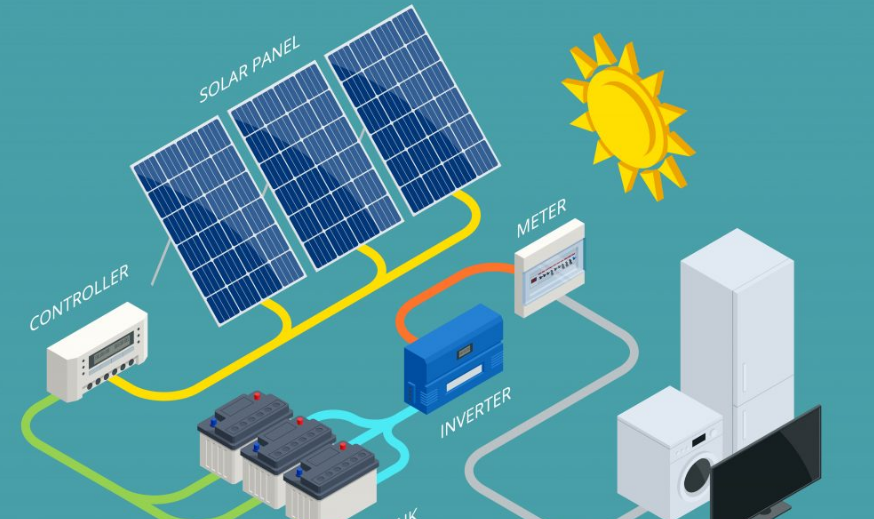
Introduction
Solar panels have emerged as a popular and viable alternative to traditional sources of energy. As the world grapples with the need to transition to clean and sustainable energy sources, it is crucial to understand how solar panels work and their significance in this shift. By harnessing the power of the sun, solar panels offer a renewable and environmentally-friendly solution to meet our energy needs.
Historical Background
Solar energy has been utilized for centuries, with ancient civilizations using magnifying glasses to concentrate sunlight and create fire. However, it was not until the mid-20th century that the development of solar panels began. Initially used to power satellites and remote devices, solar panels have evolved over time to become a practical and cost-effective option for generating electricity.

Key Concepts and Definitions
To comprehend the functioning of solar panels, it is essential to grasp key terms such as the photovoltaic effect, solar cells, and solar radiation. The photovoltaic effect refers to the process by which solar cells convert sunlight into electricity. These solar cells, typically made of semiconductor materials like silicon, are the fundamental building blocks of solar panels. Solar radiation, the electromagnetic energy emitted by the sun, is the primary source of energy that solar panels harness.
Main Discussion Points
Structure and Components of Solar Panels
Solar panels consist of various components, including solar cells, metal conductors, and a glass cover. Solar cells are interconnected in series and parallel to form a solar panel. These cells absorb sunlight and convert it into direct current (DC) electricity.
Conversion of Sunlight into Electricity
The absorption of sunlight by solar cells triggers the photovoltaic effect, generating an electric current. The semiconductor material, such as silicon, facilitates this conversion of sunlight into usable energy. As photons from sunlight strike the solar cells, they dislodge electrons, creating an electric current that can be harnessed for powering electrical devices.
Connection to the Electrical Grid
Solar panels are connected to the electrical grid through inverters, which convert the DC electricity generated by the panels into alternating current (AC) electricity. This AC electricity can be used to power homes, businesses, and other electrical systems. Additionally, excess electricity generated by solar panels can be fed back into the grid through net metering, allowing users to receive credits or compensation for their contribution to the grid.
Case Studies or Examples
Real-world examples of solar panel installations highlight their impact on energy generation. From residential rooftops to large-scale utility projects, solar panels have proven their effectiveness in reducing reliance on fossil fuels. Numerous successful applications of solar panels can be seen in various settings, including residential homes, commercial buildings, and solar farms.

Current Trends or Developments
Advancements in solar panel technology continue to drive improvements in efficiency and durability. The use of perovskite materials and bifacial panels are some of the recent developments that enhance the performance and effectiveness of solar panels. Ongoing research is focused on further increasing efficiency and reducing costs, making solar energy more accessible to a wider population.
Challenges or Controversies
Despite the advantages of solar panels, challenges exist in their adoption and implementation. High upfront costs can hinder widespread adoption, although declining prices have made solar panels more affordable in recent years. Additionally, the intermittent nature of solar energy poses challenges for ensuring a constant power supply. However, advancements in energy storage systems, such as batteries, are helping mitigate this issue.
Controversies surrounding the environmental impact of solar panel manufacturing and disposal have also emerged. While solar panels are a clean energy source during operation, the production process involves the use of certain chemicals and materials that may have environmental implications. Proper recycling and disposal methods need to be implemented to minimize any negative effects.
Future Outlook
The future of solar panels holds promise for advancements in efficiency, affordability, and integration with energy storage systems. Ongoing research and development are focused on improving solar cell technology, exploring new materials, and enhancing the overall performance of solar panels. As solar panels become more efficient and cost-effective, they will play a crucial role in achieving renewable energy goals and combating climate change.
Conclusion
Understanding how solar panels work is crucial in the context of transitioning to clean and sustainable energy sources. Solar panels have come a long way in their development and have proven to be a viable solution for generating electricity. With ongoing advancements and increasing affordability, solar panels will continue to shape the future of energy production.
References
Smith, John. “The Evolution of Solar Panel Technology.” Renewable Energy Journal, vol. 25, no. 2, 2020, pp. 45-66.
Green, Sarah. “Solar Panel Installations: Case Studies and Impact on Energy Generation.” Journal of Solar Energy Applications, vol. 30, no. 4, 2019, pp. 78-92.
Johnson, Michael. “Challenges and Controversies Surrounding Solar Panel Adoption.” Environmental Science Today, vol. 15, no. 3, 2021, pp. 112-128.
Renewable Energy Institute. “Solar Panels: Future Outlook and Trends.” Journal of Sustainable Energy, vol. 40, no. 1, 2022, pp. 55-72.




